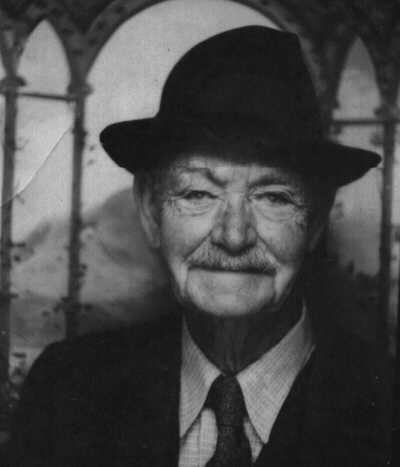
THE STORY OF THE WILLIS TOWNSLEY FAMILY

As we have related the story of the creation of Platt National Park and the removal of the town of Sulphur Springs from the Reserve, we have often mentioned the name of Willis L. Townsley. Probably, there were few other families, in the early days of Sulphur Springs, that had a more positive effect on the development of the new town.
When the buildings of the old town were appraised for auction, Willis was selected. The people who were on the appraisement commission were Superintendent Swords, H. F. Weems and Willis Townsley.
Willis was a businessman in the old town of Sulphur Springs and his wife ran a small shop. When the Reservation was established, Willis was the first Watchman of the Buffalo and Antelope Springs. He was quartered in the old ranger house just east of Panther Falls on Sulphur Creek.
We came across the following article in the Centennial Issue of the Sulphur Times-Democrat of June 15, 1995. The story was contributed by Ruby Townsley and describes the arrival and the contributions of Willis Townsley to the development of the area. It is well worth repeating and we hope you discover something new and interesting. We have taken the liberty to edit some of the article for the sake of space.
"Having made one of the runs for land into Oklahoma Territory, Willis and Orpha Belle Townsley settled at Yukon. They had four children: Forrest, Hazel, Ina and John. In 1900, they came to Sulphur on a vacation.
Forrest had been finned by a catfish and a serious infection followed. The Townsleys had been told that Forrest's leg would have to be amputated. They decided to try the healing springs at Sulphur where they packed mud around the leg. It got well.
Orpha Belle, an avid fisherwoman, fell in love with the place when they drove into Rock Creek Crossing. Water came up over the wagon bed. In the Fall she moved her millinery shop and Willis moved his real estate office to Sulphur.
When the town began to shift from the Reservation, Willis moved the (White) Sulphur Inn north to the side of a hill and called it the Park Hotel. It was across the street from the Park. He drilled an artesian well and built a swimming pool and skating rink.
Sulphur grew from less than 500 people to 4,000 in a short time. In summer, thousands of people came filling the hotels.
Forrest, at age 22, began his Park career in 1904 in what became Platt National Park. He served as the first patrolman, then ranger. Working with Col. Swords, superintendent, Forrest was involved with building roads, trails, entrances, and bridges, including famous Lincoln Bridge.
He married the daughter of J. J. Dabbs a local merchant and they became the parents of four children: Hazel, Joe, Virginia and Forrest Jr. In 1913 he became ranger in Yosemite and in 1916, chief ranger, a position he held until his death in 1943.
Forrest's only child by a later marriage, John Allen, would serve as Superintendent of Yellowstone National Park.
John, another son of Willis, spent three years working in Yosemite when he came home to enter business with his father. His plans were interrupted by WWI. When he returned, he worked for Hassen Dry Goods in winter and on the Vendome complex at other times. After working as a bookkeeper for Ameen Hassen, John became manager of a gin and feed store. Mr. Hassen was a fine gentleman, commanding the respect of all who knew him.
(Ed. Note: John, the younger son of Willis, was the messenger/janitor of Col. Swords in the Park office. John got the job when he was 15 years old and worked there for a couple of years until he suffered an injury ("infected head") in a football game and took sick leave.)
On August 22, 1921, John and Ruby Slover had a home wedding after which they spent six weeks on a honeymoon in Yosemite, San Francisco and Los Angeles. When they returned home John began drilling the Vendome well.
Frank Lewis, John's partner who had married Ina Townsley, bought Willis Townsleys business interest. The two brought in the Vendome Well in the Spring of 1922. It flowed 3,500 gallons a minute. They enlarged the swimming pool, built a warming pool, dance pavilion and restaurant. The pavilion was above the dressing rooms, office and restaurant. It (second floor dance pavilion) had windows to open for cooling.
Each May the merchants opened the summer with a parade. Neighboring towns participated entering floats. May 24th, 1923 was the date of the first water carnival held in Sulphur.
In Summer, people flocked to one of the privately owned bathing pools or to Travertine Creek for swimming, later going picnicking, bowling, horseback riding from the stable that was available or dancing.
During the depression, which began in 1929, hamburgers were three for twenty-five cents. Young people danced to juke box music for ten cents a dance when they could afford it.
Each year, John and Frank closed the Vendome with the Labor Day celebration. Feeling fall in the air, people looked forward to another beautiful Indian Summer, knowing that by spring they would be ready for another season."
© 2006 Dennis Muncrief